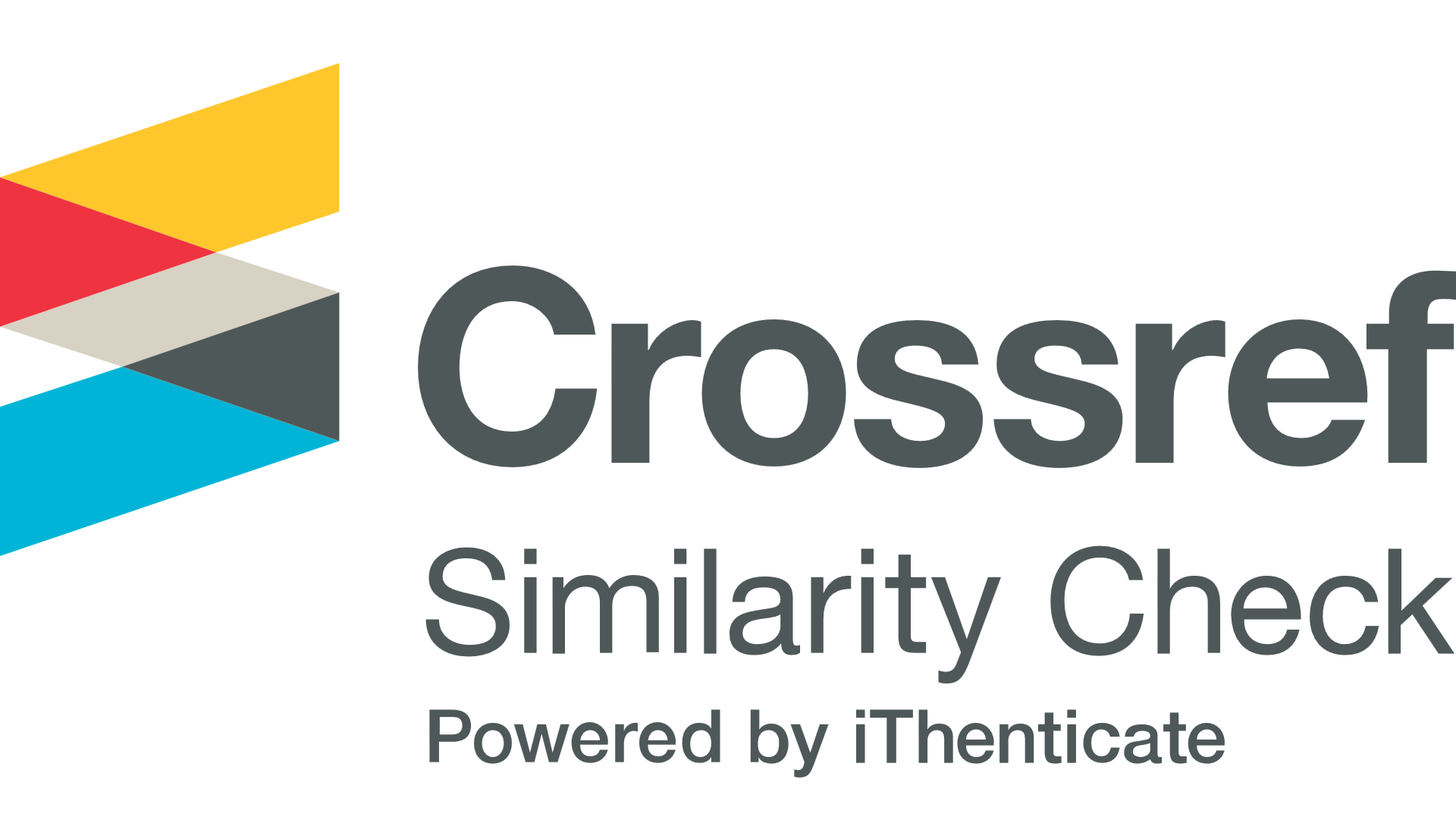Faktor-Faktor yang Mempengaruhi Adopsi E-learning untuk Siswa SMA di Indonesia dengan Menggunakan Extended Technology Acceptance Model
DOI:
https://doi.org/10.37823/insight.v4i01.179Keywords:
E-learning, Technology Acceptance Model, SEM, Behavioral IntentionAbstract
Penggunaan berbagai macam aplikasi berbasis internet sudah meluas di Indonesia. Didukung dengan berbagai macam perangkat yang mampu mengaksesnya di kalangan remaja, terutama siswa sekolah pada bangku pendidikan di SMA. Gaya hidup serba mobile dan aktivitas penunjang akademis siswa di luar pendidikan formal, cukup menyita waktu. Sehingga waktu belajar secara tradisional pun semakin sedikit. Perkembangan teknologi yang pesat juga berdampak pada dunia pendidikan. Memanfaatkan teknologi, keterbatasan akses informasi dan materi belajar, terutama keterbatasan ruang dan waktu dapat dijembatani dengan menggunakan E-learning. Penelitian ini bertujuan untuk mencari tahu, faktor-faktor apa saja yang dapat mempengaruhi siswa SMA di Indonesia untuk mau mengadopsi E-learning. Sebuah model teoritis dibuat berdasarkan sejumlah penelitian sebelumnya dan memanfaatkan model dasar Technology Acceptance Model (TAM) dan konstruksi E-learning yang spesifik. Pengumpulan data dilakukan dengan menggunakan kuesioner berbasis online. Data akhir yang terkumpul berjumlah 517 data dari siswa SMA di Indonesia. Structural Equation Modeling (SEM) digunakan untuk menganalisis dan pengolahan model teoritis menggunakan software AMOS. Faktor-faktor dalam model teoritis adalah Self-Efficacy, Social Influence, Computer Anxiety, Prior Experience, Facilitating Conditions, dan Perceived Enjoyment. Bentuk dasar TAM yang digunakan meliputi Perceived Usefulness, Perceived Ease of Use, dan Behavioral Intention. Dalam proses Factor Analysis, Facilitating Conditions dihapus dari model teoritis, karena tidak mampu menunjukkan posisi konvergen dan diskriminan. Faktor Perceived Usefulness dan Perceived Enjoyment adalah dua faktor yang paling mempengaruhi Behavioral Intention di dalam proses adopsi E-learning. Hasil penelitian menunjukkan Perceived Enjoyment memiliki pengaruh secara langsung dan positif pada Perceived Usefulness yang tertinggi dibandingkan faktor lainnya. Self-Efficacy memiliki pengaruh secara langsung dan positif pada Perceived Ease of Use yang tertinggi dibandingkan faktor lainnya. Berdasarkan hasil penelitian ini, maka dapat ditekankan, bahwa untuk mencapai tujuan agar seseorang mau mengadopsi E-learning, instansi terkait harus menunjang kebutuhan penerapan E-learning dengan berfokus pada sisi manfaat dan kepuasan yang menyenangkan pengguna dalam pengalamannya menggunakan E-learning
References
“INTERNET USAGE STATISTICS, The Internet Big Picture, World Internet Users and 2019 Population Stats,” 2019. https://www.internetworldstats.com/stats.htm (accessed Mar. 29, 2019).
J. Cross, “An informal history of eLearning,” On the Horizon, vol. 12, no. 3. pp. 103–110, Sep. 01, 2004, doi: 10.1108/10748120410555340.
V. Piccioli, “Global E-Learning Market Infographic,” Docebo. https://www.docebo.com/blog/global-e-learning-market-infographic/ (accessed Mar. 29, 2019).
Anonim, “2010-2015 Top Self-paced eLearning Five-yearGrowth Rates by Country,” Ambient Insight. http://www.ambientinsight.com/News/Ambient-Insight-2010-2015-Worldwide-eLearning-Market.aspx (accessed Mar. 29, 2019).
A. Kukulska-Hulme, M. Sharples, M. Milrad, I. Arnedillo-Sanchez, and G. Vavoula, “Innovation in Mobile Learning: A European Perspective,” Int. J. Mob. Blended Learn., vol. 1, no. 1, pp. 13–35, 2009, doi: 10.4018/jmbl.2009010102.
M. Rosenberg, E-Learning : Strategies for Delivering Knowledge in the Digital Age. McGraw-Hill Education, 2001.
D. E. Hartley, Selling E-Learning. American Society for Training and Development, 2001.
B. H. Khan, Managing E-Learning : Design, Delivery, Implementation, and Evaluation. Information Science Publishing, 2005.
F. D. Davis, “Perceived Usefulness, Perceived Ease of Use, and User Acceptance of Information Technology,” MIS Q., vol. 13, no. 3, pp. 319–340, 1989, [Online]. Available: http://www.jstor.org/stable/249008.
Y. Malhotra and D. F. Galletta, “Extending the technology acceptance model to account for social influence: theoretical bases and empirical validation,” Proc. 32nd Hawaii Int. Conf. Syst. Sci., 1999, doi: 10.1109/hicss.1999.772658.
R. Boateng, A. S. Mbrokoh, L. Boateng, P. K. Senyo, and E. Ansong, “Determinants of e-learning adoption among students of developing countries,” Int. J. Inf. Learn. Technol., vol. 33, no. 4, pp. 248–262, Aug. 2016, doi: 10.1108/IJILT-02-2016-0008.
C. Ching-Ter, J. Hajiyev, and C. R. Su, “Examining the students’ behavioral intention to use e-learning in Azerbaijan? The General Extended Technology Acceptance Model for E-learning approach,” Comput. Educ., vol. 111, pp. 128–143, Aug. 2017, doi: 10.1016/j.compedu.2017.04.010.
H. R. Chen and H. F. Tseng, “Factors that influence acceptance of web-based e-learning systems for the in-service education of junior high school teachers in Taiwan,” Eval. Program Plann., vol. 35, no. 3, pp. 398–406, Aug. 2012, doi: 10.1016/j.evalprogplan.2011.11.007.
F. Kanwal and M. Rehman, “Factors Affecting E-Learning Adoption in Developing Countries-Empirical Evidence from Pakistan’s Higher Education Sector,” IEEE Access, vol. 5, pp. 10968–10978, 2017, doi: 10.1109/ACCESS.2017.2714379.
S. Madorin and C. Iwasiw, “The effects of computer-assisted instruction on the self-efficacy of baccalaureate,” J. Nurs. Educ. 38(6), pp. 282–295, 1999.
V. Venkatesh, M. G. Morris, G. B. Davis, and F. D. Davis, “User Acceptance of Information Technology: Toward a Unified View,” MIS Q., vol. 27, no. 3, pp. 425–478, 2003, doi: 10.1016/j.inoche.2016.03.015.
A. Hayashi, C. Chen, T. Ryan, and J. Wu, “The Role of Social Presence and Moderating Role of Computer Self Efficacy in Predicting the Continuance Usage of E-Learning Systems,” J. Inf. Syst. Educ., vol. 15, no. 2, p. 5, 2020.
M. Tan and T. S. H. Teo, “Factors Influencing the Adoption of Internet Banking,” J. Assoc. Inf. Syst., vol. 1, no. 5, pp. 1–44.
Á. F. Agudo-Peregrina, Á. Hernández-García, and F. J. Pascual-Miguel, “Behavioral intention, use behavior and the acceptance of electronic learning systems: Differences between higher education and lifelong learning,” Comput. Human Behav., vol. 34, pp. 301–314, 2014, doi: 10.1016/j.chb.2013.10.035.
Y. Park, H. Son, and C. Kim, “Investigating the determinants of construction professionals’ acceptance of web-based training: An extension of the technology acceptance model,” in Automation in Construction, Mar. 2012, vol. 22, pp. 377–386, doi: 10.1016/j.autcon.2011.09.016.
A. Hanif, F. Q. Jamal, and M. Imran, “Extending the technology acceptance model for use of e-learning systems by digital learners,” IEEE Access, vol. 6, pp. 73395–73404, 2018, doi: 10.1109/ACCESS.2018.2881384.
V. Moreno, F. Cavazotte, and I. Alves, “Explaining university students’ effective use of e-learning platforms,” Br. J. Educ. Technol., vol. 48, no. 4, pp. 995–1009, Jul. 2017, doi: 10.1111/bjet.12469.
M. Igbaria and S. Parasuraman, “A Path Analytic Study of Individual Characteristics, Computer Anxiety and Attitudes toward Microcomputers,” J. Manage., vol. 15, no. 3, pp. 373–388, 1989, doi: 10.1177/014920638901500302.
S. H. Purnomo and Y.-H. Lee, “E-learning adoption in the banking workplace in Indonesia,” Inf. Dev., vol. 29, no. 2, pp. 138–153, May 2012, doi: 10.1177/0266666912448258.
J. C. C. Lin and H. Lu, “Towards an understanding of the behavioural intention to use a web site,” Int. J. Inf. Manage., vol. 20, no. 3, pp. 197–208, 2000, doi: 10.1016/S0268-4012(00)00005-0.
S. Y. Park, M. W. Nam, and S. B. Cha, “University students’ behavioral intention to use mobile learning: Evaluating the technology acceptance model,” Br. J. Educ. Technol., vol. 43, no. 4, pp. 592–605, 2012, doi: 10.1111/j.1467-8535.2011.01229.x.
W. M. Al-Rahmi et al., “Integrating Technology Acceptance Model with Innovation Diffusion Theory: An Empirical Investigation on students’ Intention to use E-Learning Systems,” IEEE Access, pp. 1–1, 2019, doi: 10.1109/ACCESS.2019.2899368.
E. I. Tyas and E. S. Darma, “Pengaruh Perceived Usefulness, Perceived Ease of Use, Perceived Enjoyment, dan Actual Usage Terhadap Penerimaan Teknologi Informasi: Studi Empiris Pada Karyawan Bagian Akuntansi dan Keuangan Baitul Maal Wa Tamwil Wilayah Daerah Istimewa Yogyakarta,” Reviu Akunt. dan Bisnis Indones., vol. 1, no. 1, pp. 25–35, 2017, doi: 10.18196/rab.010103.
R. Agarwal and E. Karahanna, “Time flies when you’re having fun: Cognitive absorption and beliefs about information technology usage,” MIS Q. Manag. Inf. Syst., vol. 24, no. 4, pp. 665–694, 2000, doi: 10.2307/3250951.
M. C. Boudreau, D. Gefen, and D. W. Straub, “Validation in information systems research: A state-of-the-art assessment,” MIS Q. Manag. Inf. Syst., vol. 25, no. 1, pp. 1–16, 2001, doi: 10.2307/3250956.
T. D. Cook and D. T. Campbell, Quasi-experimentation : design & analysis issues for field settings. Boston: Houghton Mifflin, 1979.
Y. S. Wang, M. C. Wu, and H. Y. Wang, “Investigating the determinants and age and gender differences in the acceptance of mobile learning,” Br. J. Educ. Technol., vol. 40, no. 1, pp. 92–118, 2009, doi: 10.1111/j.1467-8535.2007.00809.x.
J. H. Huang, Y. R. Lin, and S. T. Chuang, “Elucidating user behavior of mobile learning: A perspective of the extended technology acceptance model,” Electron. Libr., vol. 25, no. 5, pp. 585–598, 2007, doi: 10.1108/02640470710829569.
J. N. Lowenthal, “Using mobile learning: Determinates impacting behavioral intention,” Am. J. Distance Educ., vol. 24, no. 4, pp. 195–206, 2010, doi: 10.1080/08923647.2010.519947.
N. J. Salkind, Encyclopedia of research design. Thousand Oaks: SAGE Publications, 2010.
D. Straub, M.-C. Boudreau, and D. Gefen, “Validation Guidelines for IS Positivist Research,” Commun. Assoc. Inf. Syst., vol. 13, no. March, pp. 380–427, 2004, doi: 10.17705/1cais.01324.
D. George and P. Mallery, SPSS for windows step by step: A simple guide and reference. 11.0 update. Boston: Allyn and Bacon, 2003.
R. B. Kline, Principles and practice of structural equation modeling, 4th ed. London: Guilford Press, 2016.
J. Cohen, Statistical power analysis for the behavioral sciences, 2nd ed. New York: Academic Press, 1988.
J. Cohen and P. Cohen, Applied multiple regression / correlation analysis for the behavioral sciences, 3rd ed. Mahwah, N.J.: Erlbaum, 1983.
Downloads
Published
How to Cite
Issue
Section
License
Copyright (c) 2022 Journal of Information System,Graphics, Hospitality and Technology

This work is licensed under a Creative Commons Attribution-ShareAlike 4.0 International License.
















.png)
.png)






